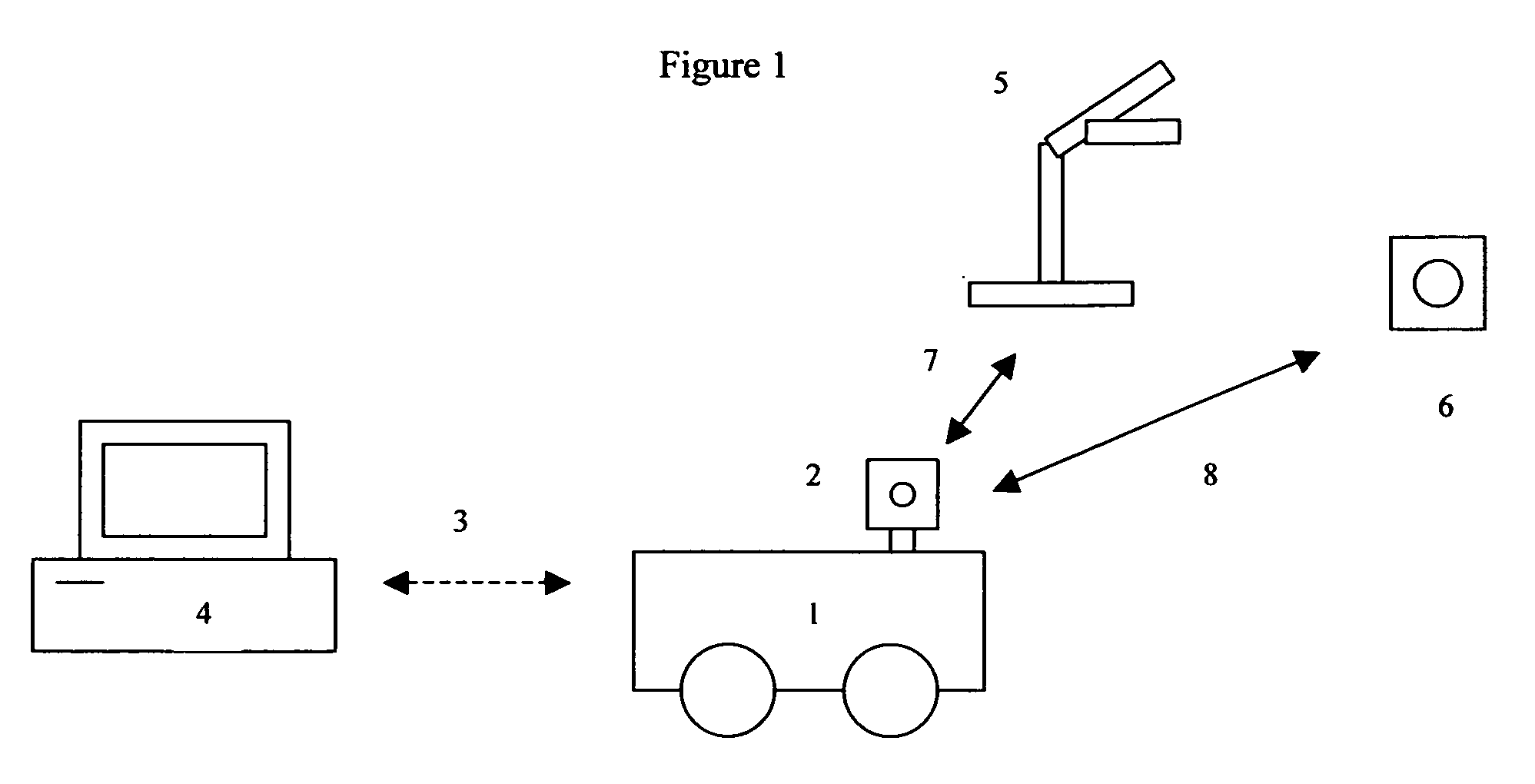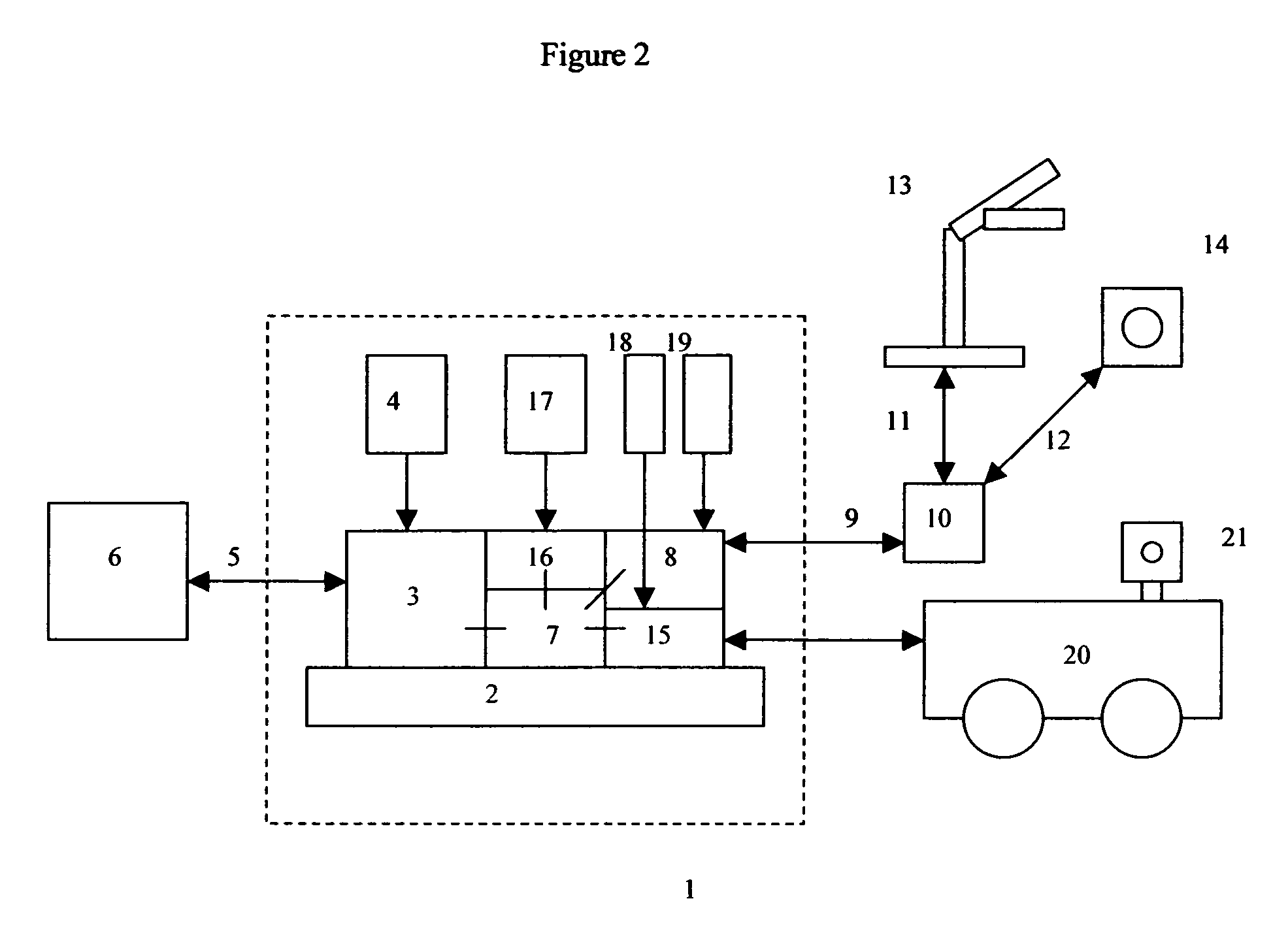Mobile robot with wireless location sensing apparatus
a wireless location and robot technology, applied in the field of mobile robots with wireless location sensing apparatus, can solve the problems of not being able to discuss all possible applications at the same time, affecting the widespread adoption of robotics technology, and affecting the accuracy of positioning information, so as to improve the knowledge of the location
- Summary
- Abstract
- Description
- Claims
- Application Information
AI Technical Summary
Benefits of technology
Problems solved by technology
Method used
Image
Examples
Embodiment Construction
[0072] At present, mobile robots and robotic systems tend to be inflexible, specialized, and expensive. In order to bring the advantages of robotic automation into more general use, robots must be designed that are simple, low-cost, and general purpose. Such robotic systems can be can be constructed according to the principles disclosed herein. This can be done by combining the flexibility and generality of Internet technology, with mobile, capable, and general-purpose robots, and multiple SBDRL external peripherals that are optimized to address specific tasks.
[0073] In the broadest sense of the invention, the “robot” disclosed here is a self-propelled mobile internet server with a capability of establishing both a first connection to the internet for robotic control purposes, and a capability of establishing a second bi-directional digital radio connection to one or more local digital radio devices that may not be themselves directly connected to the internet, and which usually ha...
PUM
 Login to View More
Login to View More Abstract
Description
Claims
Application Information
 Login to View More
Login to View More - R&D
- Intellectual Property
- Life Sciences
- Materials
- Tech Scout
- Unparalleled Data Quality
- Higher Quality Content
- 60% Fewer Hallucinations
Browse by: Latest US Patents, China's latest patents, Technical Efficacy Thesaurus, Application Domain, Technology Topic, Popular Technical Reports.
© 2025 PatSnap. All rights reserved.Legal|Privacy policy|Modern Slavery Act Transparency Statement|Sitemap|About US| Contact US: help@patsnap.com



